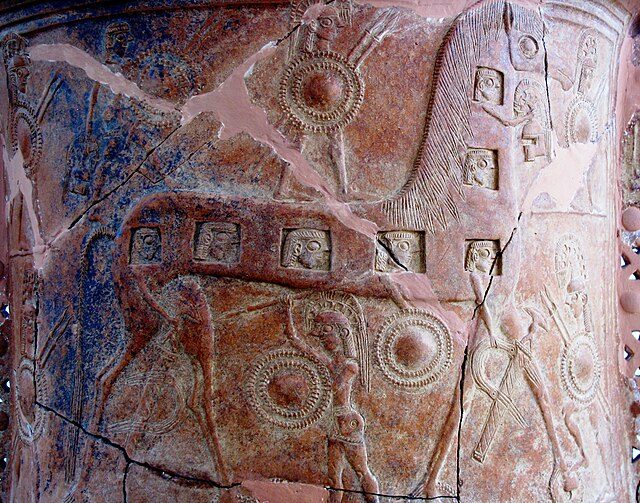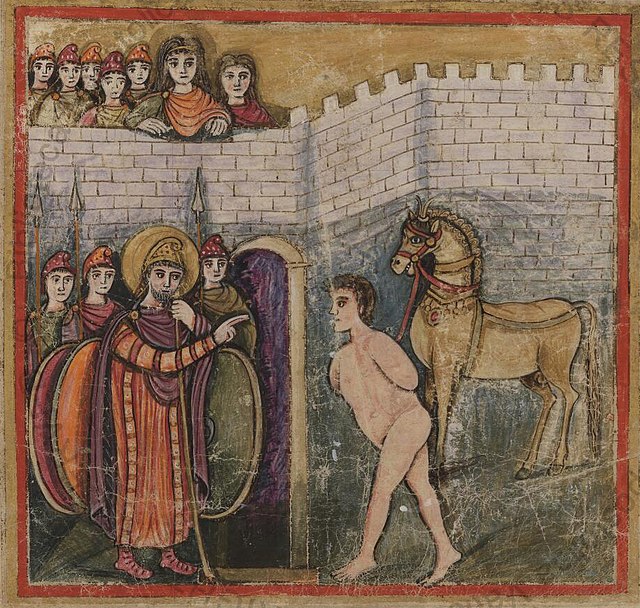Laocoön is a figure in Greek and Roman mythology and the Epic Cycle. Laocoön is a Trojan priest. He and his two young sons are attacked by giant serpents, sent by the gods when Laocoön argued against bringing the Trojan horse into the city. The story of Laocoön has been the subject of numerous artists, both in ancient and in more contemporary times.
Laocoön and His Sons in the Vatican
Death of Laocoön from the Vatican Vergil
Laocoön and his sons attacked by serpents sent by Athena, fresco in Pompeii
In Greek mythology, the Trojan Horse was a wooden horse said to have been used by the Greeks during the Trojan War to enter the city of Troy and win the war. The Trojan Horse is not mentioned in Homer's Iliad, with the poem ending before the war is concluded, and it is only briefly mentioned in the Odyssey. But in the Aeneid by Virgil, after a fruitless 10-year siege, the Greeks constructed a huge wooden horse at the behest of Odysseus, and hid a select force of men inside, including Odysseus himself. The Greeks pretended to sail away, and the Trojans pulled the horse into their city as a victory trophy. That night, the Greek force crept out of the horse and opened the gates for the rest of the Greek army, which had sailed back under the cover of darkness. The Greeks entered and destroyed the city, ending the war.
The Mykonos vase (750 to 650 BC), with one of the earliest known renditions of the Trojan Horse (note the depiction of the faces of hidden warriors shown on the horse's side)
Sinon is brought to Priam, from folio 101r of the Roman Vergil.
The Phoenician ship called hippos, from the Assyrian city of Khorsabad, 8th century BC
Depiction of the Trojan Horse on a Corinthian aryballos (c. 560 BC) found in Cerveteri (Italy)







